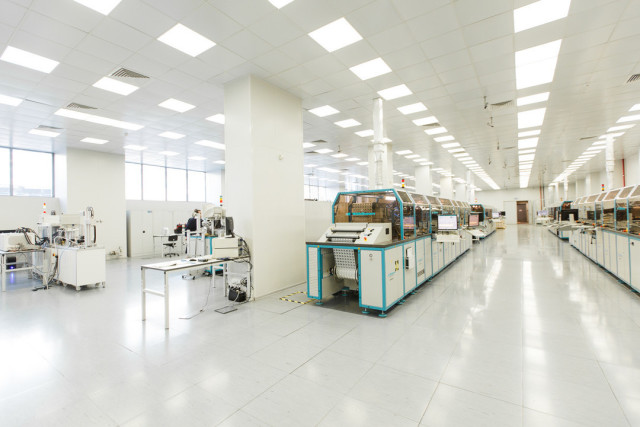Micron intends to double the volume of silicon wafers produced in the coming years in order to overcome the shortage of domestic semiconductors in Russia. For this, the plant will need 10 billion rubles. "Micron" intends to purchase used production equipment, which in recent years has become a standard global practice in this industry.
The Russian manufacturer of microchips "Micron", which calls itself "chipmaker No. 1 in Russia", is going to double the volume of products in the coming years, writes Kommersant. According to the vendor's management plan, by 2025 the total output of silicon wafers for chips with a topology of 180-90 nm should increase from the current 3000 per month to 6000.
To implement this plan, Micron will need investments. The plant, currently owned by Element Group of Companies (part of Rostec State Corporation) and Sistema AFC, intends to spend about 10 billion rubles on this. Who will eventually become an investor, at the time of publication of the material remained unknown, but the management expects to receive money from the state as part of the project for the development of domestic electronics.
This project is a set of measures designed to revitalize this industry. It includes multibillion-dollar investments both in the production of Russian electronics and in increasing demand for it from the citizens of the country. The authorities also want to allocate considerable funds to eliminate the personnel shortage in this area, which worsened at the end of winter – in the spring of 2022.
According to Kommersant's sources, the Micron plan for the development of domestic microelectronics production and doubling its own capacities includes points in advance that allow saving on expenses. This will primarily affect the production "hardware".
According to the publication, "Micron" intends to equip new lines with equipment purchased on the secondary market. In particular, these will be etching, deposition and photolithography installations.
On the one hand, the use of second-hand equipment on new lines looks like an attempt to survive in the conditions of anti-Russian sanctions imposed by foreign states after the start of the special operation. On the other hand, at the beginning of this decade, it became the universal norm. Secondary equipment for the production of microchips is being bought up by companies all over the world. It costs less (although not always), and delays in deliveries change only a couple of months, while new hardware has to wait for years due to increased demand for it in conditions of a shortage of semiconductors.
Micron plans to expand production for quite objective reasons. Since the end of February 2022, the Zelenograd plant has been inundated with orders, since Russia, under the yoke of sanctions, began an emergency transition to domestic chips. They were sharply needed in many areas, including in Internet of Things devices and in telemetry equipment.
Against the background of an increase in the volume of orders, Micron has hit the ceiling of its production capabilities. The available capacities are not enough: for example, now the plant can produce no more than 13 million chips for bank cards, while the country may need tens of millions of such chips.
However, not everyone believes that Micron's plan to expand production, including at the expense of second-hand equipment, will help to overcome the domestic shortage of microchips. Sources of the publication in the microelectronics market claim that the plant can really buy "iron" in Asian countries and then set up its work by domestic specialists. But at the same time, he may face a shortage of consumables, especially those supplied by companies from states that turned away from Russia.
In particular, these are photoresists imported from European countries. However, there is a chance that their production can be organized on the territory of Russia. Pavel Mashevich, Director for Innovative development of the MIET Center for Collective Use, told the publication that NIIME specialists are currently conducting development work on the development in Russia of the production of photoresists with a high level of purity.
As of April 2022, there was no production of semiconductors in Russia as such using really relevant technologies that meet modern requirements. While Taiwan's TSMC is shipping 4-nanometer chips with might and main and is getting closer to 1 nm, in Russia the record is 65 nm – the topology of 20 years ago.
Such equipment is only at the disposal of Micron. Now it is the only contract semiconductor vendor in Russia capable of producing chips more modern than 180 nm. According to Kommersant, all other competitors of Micron, the same Angstrom, work primarily for the military-industrial complex and produce 600-nanometer chips.
The "Micron" itself has existed in the country since 1959. Then the Voronezh Plant of Semiconductor Devices was founded, now renamed CJSC VZPP-Micron and part of the Micron Group of Companies. The same Group of Companies includes JSC "Micron" (Moscow), JSC "Svetlana-Semiconductors" (St. Petersburg), an assembly shop in Shenzhen (China) and several sales offices in China and Taiwan.
The Micron group of companies itself is part of the Element company, which united the microelectronic enterprises of the Rostec State Corporation (together with the Roselectronics holding and RTI Microelectronics, which is part of it). The parties agreed to establish a joint venture (JV) in February 2019.
On April 1, 2022, Micron, among some other Russian organizations, was personally sanctioned by the United States. And a week later, the Zelenograd plant reported a net profit by the end of 2021 – for the first time in 12 years. It amounted to 258 million rubles. The previous 11 years brought losses to the plant totaling more than 19 billion rubles.

